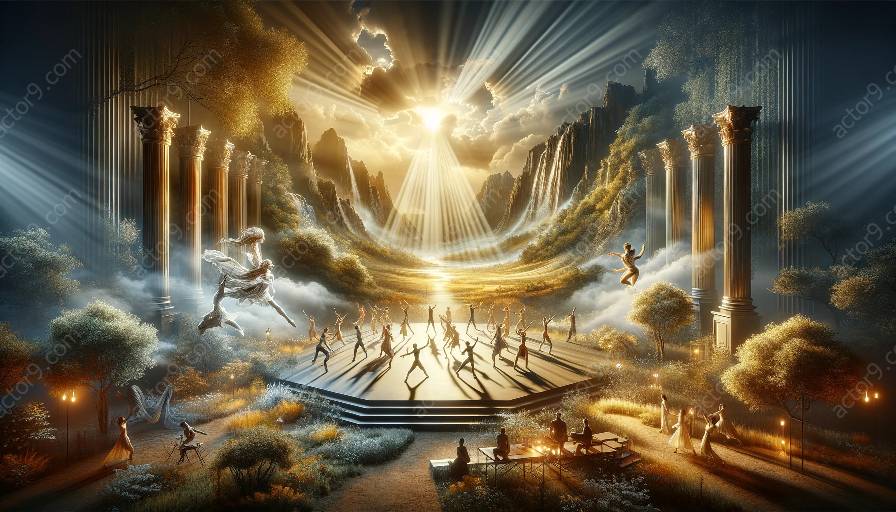Physical theatre is an expressive art form that relies heavily on the interplay of movement, sound, and visuals to convey a story or evoke emotions. Among these elements, lighting plays a crucial role in shaping the audience's perception and enhancing the performers' expressions. The evolution of lighting technology has had a profound impact on the practice of physical theatre, enabling innovative techniques and enhancing the overall theatrical experience.
The Role of Lighting in Physical Theatre
Lighting in physical theatre is far more than just illuminating the stage. It serves as a powerful tool to set the mood, create ambiance, and guide the audience's focus. From creating specific atmospheres and enhancing the dynamics of movement to symbolizing emotions and transitioning between scenes, lighting design significantly influences the storytelling and visual composition of physical theatre performances.
Continuous Evolution of Lighting Technology
The evolution of lighting technology has been an ongoing process marked by remarkable advancements in both hardware and software. Traditional incandescent lights have given way to more energy-efficient and versatile options such as LED (Light Emitting Diode) fixtures. LED technology has revolutionized lighting in physical theatre by providing greater flexibility and control over color, intensity, and movements, and reducing heat emissions. Moreover, the integration of intelligent lighting systems, such as moving lights and digital control consoles, allows for intricate lighting designs and dynamic effects that were previously unattainable.
Impact on the Practice of Physical Theatre
The advancements in lighting technology have expanded the creative possibilities for lighting designers in physical theatre. They can now experiment with intricate patterns, seamless transitions, and immersive atmospheres to enrich the visual narrative of a performance. The ability to precisely synchronize lighting cues with movements and sound further elevates the impact of physical theatre, creating seamless sensory experiences for the audience.
New Frontiers in Lighting Design
As lighting technology continues to evolve, the future of physical theatre looks promising with the emergence of interactive and immersive lighting experiences. Projection mapping, interactive LED surfaces, and augmented reality have the potential to transform the stage into a dynamic visual canvas, blurring the lines between physical and digital storytelling. These innovations are redefining the boundaries of traditional lighting design, offering new dimensions for expression and engagement in physical theatre.
Conclusion
The evolution of lighting technology has undoubtedly enriched the practice of physical theatre, empowering lighting designers to shape nuanced narratives, convey emotions, and create captivating visual spectacles. As technology continues to advance, the synergy between lighting and physical theatre will continue to evolve, opening new horizons for artistic expression and immersive storytelling.




































